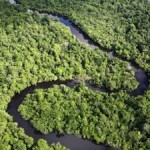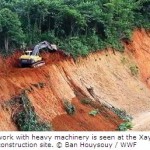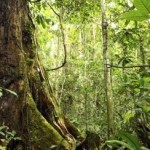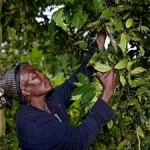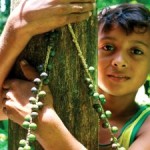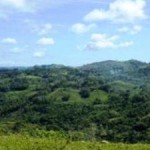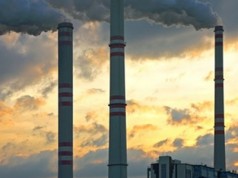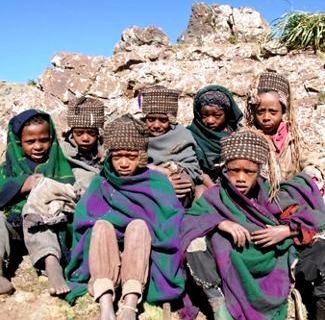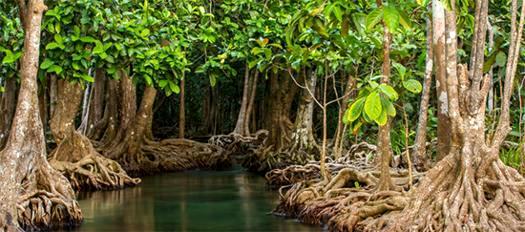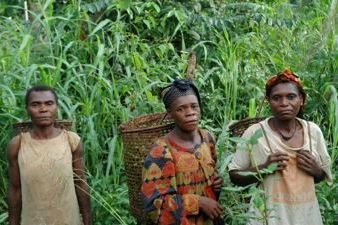 Vienna – The world’s rapidly dwindling forests should be valued as more than just “carbon warehouses” to mitigate climate change, according to a new report released on November 15 from the International Union of Forest Research Organizations (IUFRO), the world’s largest network of forest scientists. In fact, biodiversity is found to be a critical determinant of a forest’s ability to absorb greenhouse gases. The assessment also stresses that accounting for those who live in or near forests when implementing REDD+ increases the likelihood of achieving carbon and biodiversity goals.
Vienna – The world’s rapidly dwindling forests should be valued as more than just “carbon warehouses” to mitigate climate change, according to a new report released on November 15 from the International Union of Forest Research Organizations (IUFRO), the world’s largest network of forest scientists. In fact, biodiversity is found to be a critical determinant of a forest’s ability to absorb greenhouse gases. The assessment also stresses that accounting for those who live in or near forests when implementing REDD+ increases the likelihood of achieving carbon and biodiversity goals.
The report is the most comprehensive scientific analysis to date of the relationship between biodiversity, forest management and climate change mitigation in the framework of the United Nations-backed initiative REDD+ (reducing greenhouse gas emissions from deforestation and forest degradation, and enhancing forest carbon stocks in developing countries). It examines the social implications of forest and land management interventions envisaged under REDD+, emphasizing the need for an integrated landscape management approach and the fine-tuning of local strategies that involve all people who have a stake in forests.
More than 60 scientists from around the world collaborated on the peer-reviewed publication, “Understanding Relationships between Biodiversity, Carbon, Forests and People: The Key to Achieving REDD+ Objectives. A Global Assessment Report”, which was coordinated by IUFRO on behalf of the Collaborative Partnership on Forests (CPF). The full report will be formally presented at Forest Day 6 on 2 December during the United Nations Framework Convention on Climate Change (UNFCCC) meeting in Doha, Qatar (26 November-7 December, 2012).
“The study comes at a crucial point in time as climate negotiators and forest stakeholders ponder ways to move forward with REDD+ agreements reached at the previous climate summit in Durban. The goals, to secure social and environmental benefits, good governance and long-term financing, are critically important,” said Alexander Buck, Executive Director of IUFRO.
Carbon-Wise May Be Biodiversity-Foolish
“Actions that reduce deforestation and degradation are likely to have the most immediate and greatest benefits for both carbon and biodiversity,” said John Parrotta, an IUFRO scientist with the United States Forest Service (USFS) and the chair of the Global Forest Expert Panel on Biodiversity, Forest Management and REDD+, which prepared the report.
In fact, the rate of deforestation – mainly resulting from the conversion of forests to agriculture – was estimated to be 13 to 16 million hectares per year between 1990 and 2010, according to the United Nations Food and Agriculture Organization (UN FAO). Forest loss is the second largest source of carbon dioxide emissions generated by humans. At the same time, it is a major cause of global biodiversity decline and could further reduce the ability of forests to effectively provide ecosystem services – services that nature supplies to humans, including carbon sequestration. As a result, human well-being – particularly for those people most dependent on forests and most vulnerable to poverty – could be significantly and adversely impacted.
While REDD+ actions can provide clear benefits, it is not always easy to predict or measure all impacts of such interventions on carbon and biodiversity as they depend on a variety of factors. The report coordinated by IUFRO notes that globally, some two billion hectares of land – an area greater than that of South America – are potentially available for forest restoration. But how forest restoration is accomplished determines whether the restored forests will attain both carbon and biodiversity goals. For example, restoring deforested and degraded forest lands with a variety of native tree species could bring far greater biodiversity than the establishment of extensive monocultures.
“There is no one-size-fits-all solution to forest loss and degradation. Impacts of REDD+ interventions are likely to vary significantly across different forest types and landscape conditions. These impacts may occur outside the area of management or in the future, and they can also evolve over time,” said Parrotta.
He noted that the report stressed how each REDD+ project must be designed to best fit the characteristics of the forest and surrounding landscape at hand. Potential trade-offs between climate change mitigation and biodiversity conservation goals need to be carefully addressed. Lastly, forest management should strive to minimize the risk of unintended negative impacts on biodiversity and use forest goods and services at levels proven to be sustainable for the ecosystem.
Adding People to the Picture Makes a Difference
REDD+ interventions will lead to socio-economic changes that may affect peoples’ lives, either positively or negatively. In the IUFRO report, scientists emphasize that most people and groups in tropical and sub-tropical regions who are dependent on forests are often also the most vulnerable to these changes.
“There is clear evidence that including objectives to improve the livelihoods of forest-dependent people and local communities will strengthen local involvement and acceptance, and thereby support REDD+ goals,” said Christoph Wildburger, the coordinator of IUFRO’s Global Forest Expert Panels (GFEP) initiative. “Socio-economic impacts should, therefore, be considered early on in REDD+ planning and implementation. Tenure and property rights, including rights of access, use and ownership in particular, also need to be emphasized as they are crucial to ensuring the sustainable success of REDD+ activities.”
The report points out that the rights and livelihoods of the people potentially impacted by these activities need to be taken into account in any management decision related to forests and land use changes. An innovative REDD+ pilot project in Tanzania, for example, demonstrated the value of engaging village councils and assemblies in the joint forest management of state reserved forests and the community-based forest management of village lands. The project successfully increased communities’ revenues from forest management and generated new income streams to support community forestry while also bringing carbon benefits.

